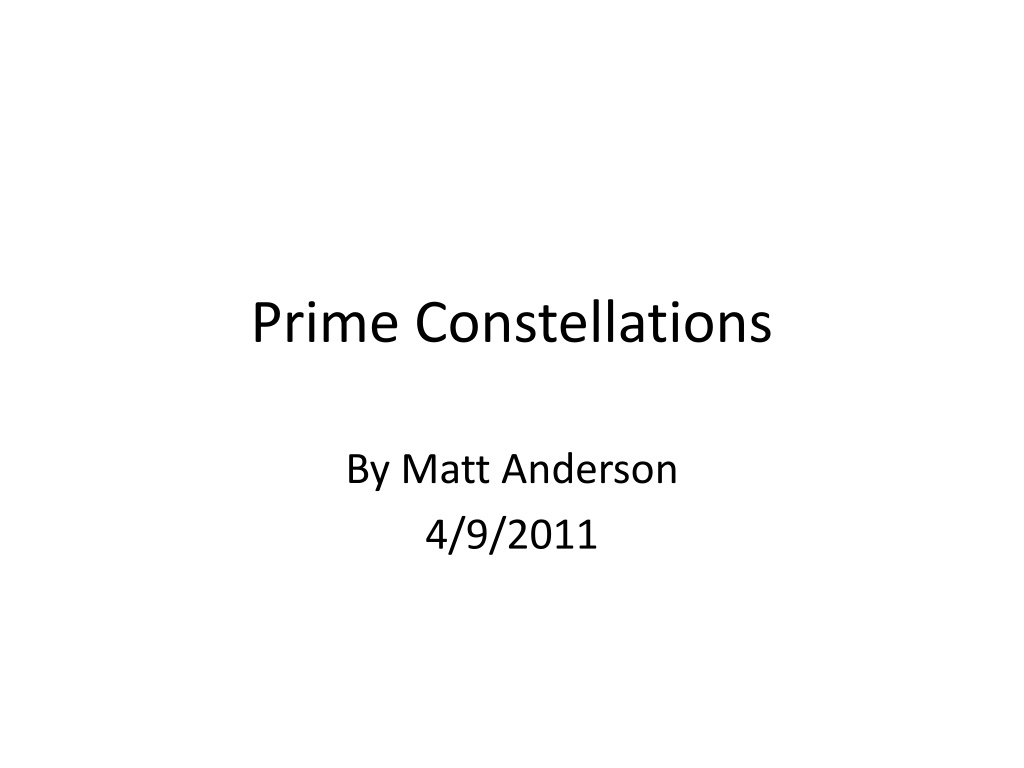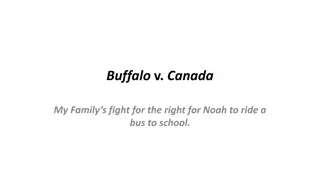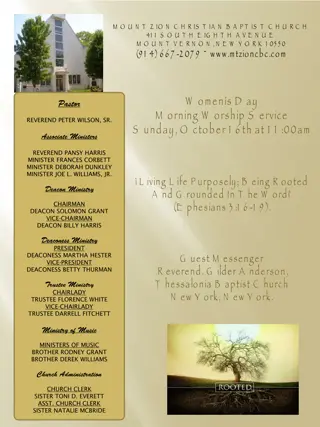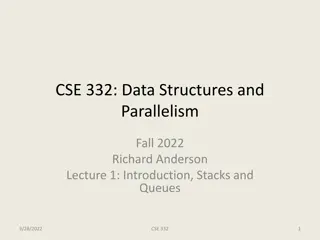
Prime Constellations and Number Theory Insights
Explore the fascinating world of prime numbers, prime counting functions, and prime k-tuples. Learn about admissible k-tuples, constellations with k primes, and the conjecture on infinite twin primes. Delve into numerical evidence supporting the existence of infinite primes within admissible k-tuples.
Download Presentation

Please find below an Image/Link to download the presentation.
The content on the website is provided AS IS for your information and personal use only. It may not be sold, licensed, or shared on other websites without obtaining consent from the author. If you encounter any issues during the download, it is possible that the publisher has removed the file from their server.
You are allowed to download the files provided on this website for personal or commercial use, subject to the condition that they are used lawfully. All files are the property of their respective owners.
The content on the website is provided AS IS for your information and personal use only. It may not be sold, licensed, or shared on other websites without obtaining consent from the author.
E N D
Presentation Transcript
Prime Constellations By Matt Anderson 4/9/2011
Prime numbers are integers that are divisible by only 1 and themselves. P={primes} = {2,3,5,7,11, } There are an infinite number of prime numbers.
Let (x) be the prime counting function. (x) counts the number of primes less than or equal to x. X (x) 1 0 2 1 3 2 4 2 5 3 6 3 7 4 8 4 9 4
The prime number theorem states that (x) grows like x/Ln(x). Specifically,
A prime k-tuple is an ordered set of values representing a repeatable pattern of prime numbers. Examples (0,2) twin primes (0,4) cousin primes (0,6) sexy primes (0,2,6) 3-tuple (0,4,6) 3-tuple (0,2,6,8) 4-tuple Instances {3,5},{5,7},{11,13} {3,7},{7,11},{13,17} {5,11},{7,13},{11,17} {3,5,11},{5,7,13} {7,11,13},{13,17,19} {5,7,11,13},{11,13,17,19}
A k-tuple is said to be admissible if it does not include the complete modulo set of residue classes (ie the values 0 through p-1) of any prime p k. The k-tuples listed thus far are all admissible, but (0,2,4) is not admissible. Since 0 mod 3 = 0 2 mod 3 = 2 4 mod 3 = 1 The complete set of residue classes mod 3 is {0,1,2}. The only primes that satisfy this 3-tuple are {3,5,7}. If the smallest prime is greater than 3 then it will not be possible for all three members to be prime.
An admissible prime k-tuple that is maximally dense is called a constellation with k primes. For n k, this will always produce consecutive primes. Where, n is the smallest prime in the constellation. Example: The constellation with 2 primes is (0,2). Example 2: There are 2 constellations with 3 primes. They are (0,2,6) and (0,4,6).
It is conjectured that there are an infinite number of twin primes. Also, it is conjectured that there are an infinite number of primes for every admissible k-tuple. Numerical evidence supports this conjecture.
Let m1, m2,,mk(x) be the number of (k+1) tuples less than x For example, consider the 4-tuple (0,2,6,8) The smallest prime has the form 30n+11. x 2,6,8(x) smallest examples 0 0 {5,7,11,13} 5 1 {11,13,17,19} 11 2 {191,193,197,199} 191 3 {821,823,827,829} 821 4
For example 2(x) counts the number of twin primes less than or equal to x. Similarly 4(x) counts the number of cousin primes less than or equal to x. Twin primes have the from 6x+5 and 6x+7. We know that from divisibility by 2 and 3. Primes p > 3 must have the form: p=1 mod 6 or p=5 mod 6 otherwise, they would be divisible by 2 or 3.
To find k-tuples, one must determine the values of a and b in p=ax+b for the smallest prime p in a constellation. One way to do this is by examining Ur# where r# (read r primorial) is the product of the first r primes and Ur# is the set of units mod r#. For example: U2 = {1}. All prime numbers greater than 2 are odd. U6 = {1,5}. All primes > 3 have the form 6k 1 U30 = {1,7,11,13,17,19,23,29} r r# 1 2 2 6 3 30 4 210
The first Hardy Littlewood Conjecture states that every admissible (k+1)-tuple has infinitely many prime examples and the asymptotic distribution is given by: m1,m2, ,mk(x) ~ C(m1,m2, , mk) and w(q;m1,m2, mk) is the number of distinct residues of m1, m2, , mk (mod q)
The second Hardy Littlewood conjecture states that: (x+y) (x) + (y) for all x, y with 2 x y. It is believed that there is a counterexample for x=447 and 10147 < y < 101199
Examples have been found for constellations of 2 to 23 primes. There are no known examples of constellations with 24 primes.
References: http://www.sam.math.ethz.ch/~waldvoge/Projects/clprimes05.pdf http://www.opertech.com/primes/k-tuples.html http://anthony.d.forbes.googlepages.com/ktuplets.htm http://mathworld.wolfram.com/Hardy-LittlewoodConjectures.html Elementary Number Theory 2nd Edition by Underwood Dudley Prime Numbers: A Computational Perspective 2nd Edition by Richard Crandall and Carl Pomerance






















